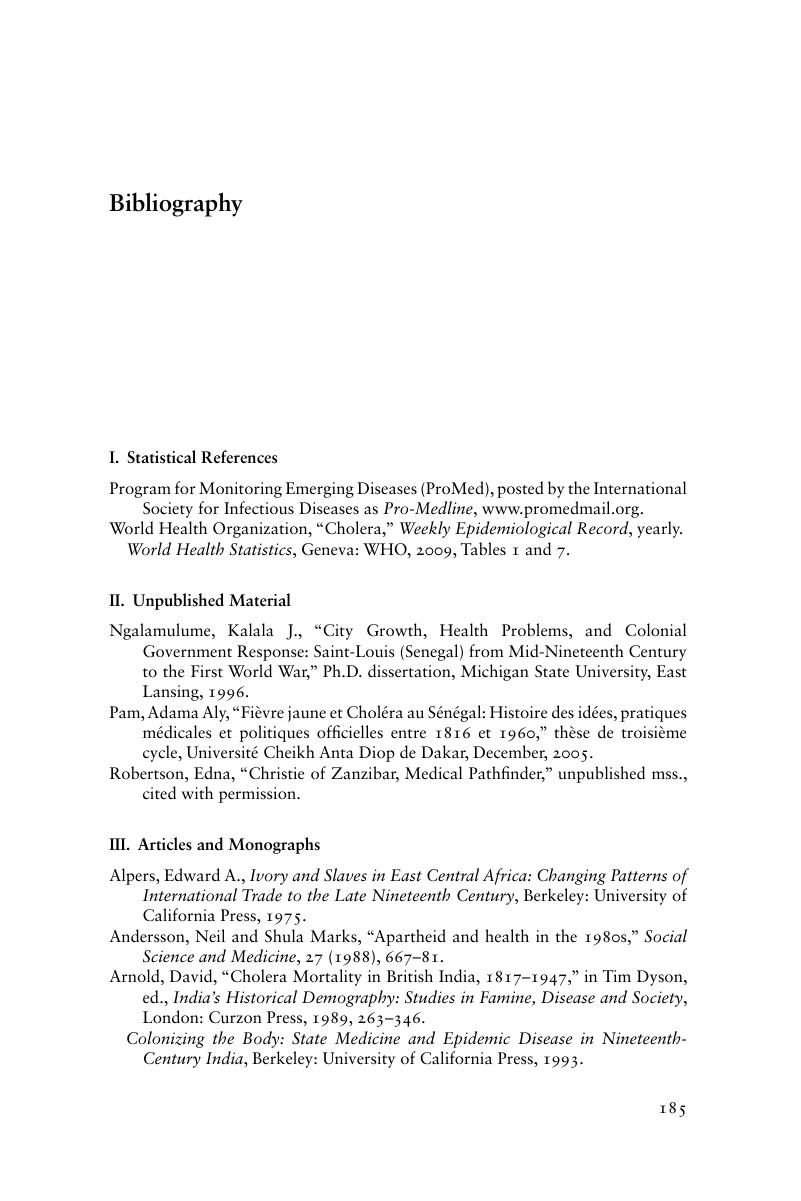Bibliography
Published online by Cambridge University Press: 05 June 2012
Summary

- Type
- Chapter
- Information
- Africa in the Time of CholeraA History of Pandemics from 1817 to the Present, pp. 185 - 198Publisher: Cambridge University PressPrint publication year: 2011



